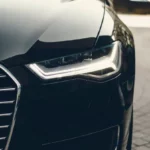A thorough understanding of each automotive brand, its background, and its offerings is necessary to make the best decision when choosing a vehicle, a hobby, a business strategy, or just to widen your horizons.
Discover the Elite Club: Top Car Brands That Start With ‘O’ Revealed

Resources that gather, retrieve, and validate such information help with this. Retaining knowledge that is further back in time is not helpful given that the history of the car began more than a century and a half ago.
Already today, it is becoming more and more apparent that a great deal of knowledge about persons who played key roles in the development of the motor industry is progressively vanishing and existing only in fragments of memories, old newspaper articles, photographs, and postcards.
The benefits of gathering and organizing knowledge are not limited to those who are interested. It enables the history of the car to be preserved for future generations. Understanding the history of your car, which is intimately related to the history of humanity, will help you comprehend the present situation and make more precise predictions about the future.
Orca Engineering
In order to build sports automobiles, the René and Ralph Beck firm was established in 2003 in Ebenholz, Vaduz, Liechtenstein. Both the Orca 113 platform and the Beck LM800 prototype were created by them.
There were three variations of the Orca 113. Seven vehicles were made: two SC7 (special model), two R113 (a concept version of the C113 roadster), and three C113 coupes. Its manufacturing was stopped in 2007. The Beck LM 800 was the only vehicle produced by the brand up until 2012. It was powered by an Audi Twin Turbo V8.
Opel
Opel Automobile GmbH, a future automobile brand with its headquarters in Rüsselsheim, Germany, has a history dating back to 1862 as a maker of sewing machines. Bicycle manufacturing started in 1886. Opel-Lutzmann released its first automobile in 1899.
An agreement to produce Opel-Darracq from 1900 through 1907 was made with the French company Automobiles Darracq S.A. The first self-developed automobiles arrived around 1902. General Motors acquired it in 1929. The millionth automobile was introduced in 1940. The brand was acquired by PSA (Stellantis) in 2017.
OSCA
In San Lazzaro di Savena, Emilia-Romagna, the OSCA (Officine Specializzate Costruzione Automobili) was established in 1947. The history of the company dates back to 1937, ten years before it was formally registered when the Maserati brothers sold the factory to Adolfo and Omar Orsi.
And it wasn’t until 1948 that the business started producing moving machinery. The MT4 was created as the initial racing model. Based on the 1600 GT and 1600 GT2 racing chassis, the business developed the Michelotti, Frua, Zagato, Fissore, and Vignale, beautiful two-seat coupes. After MV Agusta was sold in 1964, the brand was shut down in 1967.
ORECA
In the beginning, Hugues de Chaunac’s ORECA (Organization Exploitation Compétition Automobiles) was a French racing team. The company started producing sports vehicles starting in 2007. Prototypes for Courage Compétition were built on its foundation.
The Oreca 01 LMP1 class served as the brand’s first vehicle. For Formula Le Mans in 2009, the FLM09 model was created. The Oreca 05 and Oreca 07, respectively, were released in 2015 and 2017. The latter was modified, and the Acura ARX-05 raced in the IMSA WeatherTech SportsCar Championship.
Oakland Motor Car Company
In Pontiac, Michigan, United States, the Oakland Motor Car Company of America was first established. In order to compete with the top brand Pontiac in this market, General Motors bought it in 1909 with the intention of selling luxury and expensive car models.
The brand’s key success was in setting inexpensive rates for premium automotive categories so they could compete in the market. The Oakland Model 40 from 1909, the Model 50 V8 from 1916, the Model 212 All-American Sport Cabriolet from 1928, and the Model 212 All-American Landaulette Sedan from 1928 were the brand’s most well-known models. Due to a lack of ability to compete, the brand was shut down in 1931.
Osella Engineering
Vincenzo ‘Enzo’ Ozella formed the Italian racing team Osella Engineering, which debuted in the 1960s in Abarth, Italy. The business developed the Osella FA2 chassis at its workshops in 1975; it was sold a year later.
The Osella FA3 development, which was offered for sale, did not succeed. The sports team’s production direction was stopped at this moment. The team started to take the initiative once more and wasn’t called back until the 1980s and 1990s.
Ogle Design
A modest British design firm that specialized in vehicle design was called Ogle Design. David Ogle established it in Letchworth, Hertfordshire, in 1954 with the goal of creating commercially viable industrial and home furnishings.
The company began designing vehicles in 1959. Its factories started making light-duty automobiles and trucks. The new boss shut down the car manufacturing after the SX1000, the model’s creator, passed away in 1962.
Obvio
Brazil established a firm in 2001 to manufacture inexpensive microcars. It created the Obvio! 828 and the Obvio! 01. They were mostly distributed through ZAP to the American market.
The ambitious plan, however, was rendered impossible by the designer’s passing, whose name was crucial to the agreement. The business was shut down in 2019 and its properties were either sold or seized by the government.
OKA Motor Company
OKA Motor Company, an Australian automaker based in Bibra Lake, Western Australia, was established in 1986 and is well-known for its cozy cabs and bodywork mounted on all-terrain vehicle chassis.
New all-wheel-drive vehicles and tour buses were made by the firm. It developed three fundamental models, the XT, LT, and NT, from which several body modifications, such as buses with one or two cabs or multi-cabs, could be built. Such a prefabricated car was created by Alan William Baker. 2011 saw the company go out of business.
Ohta Jidosha
The Ohta Jidosha Seizosho Co., Ltd., one of Japan’s earliest automotive manufacturers, was established in Tokyo, Japan, by Hiro Otoi in 1922. When the business started, the prototype Ohta Model OS was developed and manufactured. Only in 1934 did the primary car manufacture get underway.
The company was renamed Kosoku Kikan Kogyo Co., Ltd. in 1935. The Ohta Model OC was introduced in 1936. Released in 1937 was the Ohta Model OD. The company changed its name to Ohta Jidosha Kogyo Co., Ltd. in 1947. Following the war, the company unveiled the Model PA, later known as the Tokyo Taxi. They created the OE model, the VK-2 model, and the PK-1 model. The brand was discontinued in 1957.
OSI
Since 1960, the design division of Ghia known as OSI or Officine Stampaggi Industriali in Turin, Italy, has been producing bodies made by Luigi Segre and Arrigo Olivetti.
The company managed to produce a number of bespoke models using Alfa Romeo, Fiat, and Ford goods throughout its brief existence before it was totally closed in 1968 because of financial difficulties following the death of Luigi Segre in 1963. One of its initial offerings was the 1960 Innocenti 950 Spider body. Ford’s alterations to the Anglia Torino rose to fame.
OM
Milan, Italy-based OM Carrelli Elevatori S.p.A. is an automobile manufacturer with roots dating back to 1917. It manufactures automobiles under the OM Pimespo brand. It operated on its own until 1933. The Tipo S305, which was based on the Italian Zust, was the company’s first automobile.
The storied OM 665 Superba was created in 1923. When FIAT bought the business in 1968, it changed its name to FIAT Carrelli Elevatori. The business refocused on the manufacture of top-notch material handling equipment in 2002 after leaving the FIAT organizational structure.
Join 25,000+ smart readers—don’t miss out!








